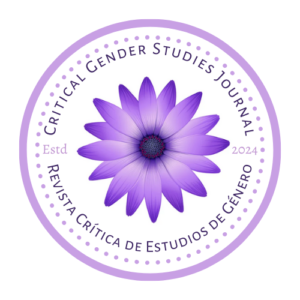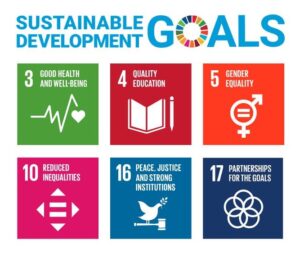Editorial Introduction
Dr Mala Shikha Shukla
Department of Spanish Studies, Doon University, Uttarakhand, India
We are pleased to release the inaugural issue of the Critical Gender Studies Journal (CGSJ). The journal serves as an interdisciplinary platform for exploring the intersection of gender and sexuality with social, cultural, historical, and political contexts. It also aims to foster discussions on the relationship between gender, sexuality, and other facets of identity while challenging assumptions and advocating for social justice. The journal eagerly looks forward to publishing groundbreaking research on gender and sexuality in our time.
While the significance of Gender Studies is widely acknowledged, certain current and future realities are quite alarming. The United Nations’ forecast for gender equality, as envisioned in SDG 5, underscores both the progress made and the substantial challenges that persist. According to UN reports, approximately 300 years are needed to eliminate child marriage globally, 286 years to close gaps in legal protection and remove discriminatory laws, and 140 years to achieve gender parity in leadership roles in the workplace. Achieving these goals necessitates accelerated efforts and robust collaboration among multiple stakeholders to ensure that gender equality becomes a reality for all. Our journal consciously contributes to the realization of this goal. For this reason, we have made our platform global, and we follow the principle of Inclusiveness in our publication policies and formation of the editorial board.
In this inaugural issue, we proudly present a wide range of original research on emerging aspects of critical gender studies. In the first article, “Gender Deconstruction in Ursula K. Le Guin’s The Left Hand of Darkness,” Kashfia Israt examines how Le Guin’s work challenges traditional gender concepts by applying feminist and queer theories to analyze how gender is shaped by society and focuses on Genly’s journey in re-evaluating heteronormative concepts of gender identity.
In “Threads of Rebellion: Indigenous Gender Dynamics among Nahua, Purépecha, and Totonac Women in the State of Mexico, Mexico,” Saira Genoveva Galindo Castro discusses traditional gender roles among Nahua, Purépecha, and Totonac women and girls who migrate to rural-urban areas in the State of Mexico. The study looks at agency, power dynamics, cultural nuances, resistance, and indigenous perspectives. It emphasizes the need to challenge deeply rooted gender norms to achieve authentic gender equality by using an intersectional approach.
In “Reading Between Worlds: Gendered Narratives in Fiction,” Alexandra Stamson discusses the use of fictional narratives to examine the portrayal of gender and how it reinforces stereotypes, biases, and oppression. It introduces three concepts of narrative design related to gender presentation in fictional worlds. The goal is to provide methods for analyzing fictional narratives in relation to the portrayal of contemporary gender systems and the potential perpetuation of harmful ideologies.
In ““We will treat you well because you are helping our nation”: Migrant Wives and Functionalist Visions of Belonging in South Korea,” Joshua Allen explores the changing societal expectations and norms migrant wives have faced in South Korea over the past thirty years. It examines government statistics, research studies, and marriage migration laws to show how norms have largely determined the recognition of migrant wives based on their perceived usefulness. The author proposes that migrant wives have been influenced by three distinguishable functionalist visions of belonging: ethnic-national, social-Confucian, and biopolitical. These visions define the migrant wives based on “blood (dis)similarities,” their ability to fulfill gendered Confucian societal roles, and their biological-reproductive potential and role in shaping future Korean citizens.
Prachi Kambli, in “Female Monstrosity, Body and The Exorcist (1973),” analyzes how horror is portrayed in relation to the female body, exploring its representation in horror media and its connection to monstrosity. It also examines how monstrosity is constructed through the female victim’s body in the cult classic film The Exorcist.
Chiara Facciani, in “Challenging Stereotypes: A Conversation Analysis Approach to Students’ Narratives about Gender,” aims to reduce gender-based violence (GBV) in early schooling and highlights the importance of effective prevention programs. The study used prevention-based class seminars to discover that these programs can significantly impact students’ reflections on gender stereotypes and violence. While some narratives reinforced traditional gender norms, the majority promoted equal gender relationships, contributing to violence prevention research in schools.
In the article ” Digital Diasporas and Gendered Narratives: A Transnational Feminist Exploration of Americanah,” Mohammad Rahmatullah and others explore the role of digital spaces in shaping gender narratives within diasporic communities. The article investigates how digital platforms serve as sites for the construction and negotiation of gender identities among diasporic populations and analyzes the impact of transnationalism on gender relations in digital spaces.
In the article “Swipe Right for Tradition: Decoding Gender Constructs in Modern Indian Matrimony through Media Representations,” Sreya Mukherjee examines how arranged marriages in India are portrayed in Netflix’s Indian Matchmaking, using an intersectional feminism framework to analyze colourism, casteism, and gender discrimination. It looks at how mainstream media reflects and perpetuates societal norms within Indian matrimony and discusses the broader implications of media representation for social discourses on gender equality and social justice.
In “The Position and Role of Women in the Private Sphere of the Slovene Counter-Revolutionary Camp”, Julija Suligoj examines the impact of World War II on women in present-day Slovenia, focusing on their roles and contributions to the Slovensko domobranstvo (Slovene Home Guard) movement. It emphasizes the adaptability and contributions of women during wartime using archival study to provide insight into the daily lives of women associated with the movement. This research helps in comprehending gender roles, life on the home front, and the positions of women during World War II in Slovene territory.
We hope this issue serves as a catalyst for engaging discussions and innovative research in the field of critical gender studies and contributes to advancing gender equality worldwide.
Citation: Shukla, M. S. (2024). Editorial Introduction. Critical Gender Studies Journal. 1:1. DOI: https://doi.org/10.21659/cgsj.v1n1.00







